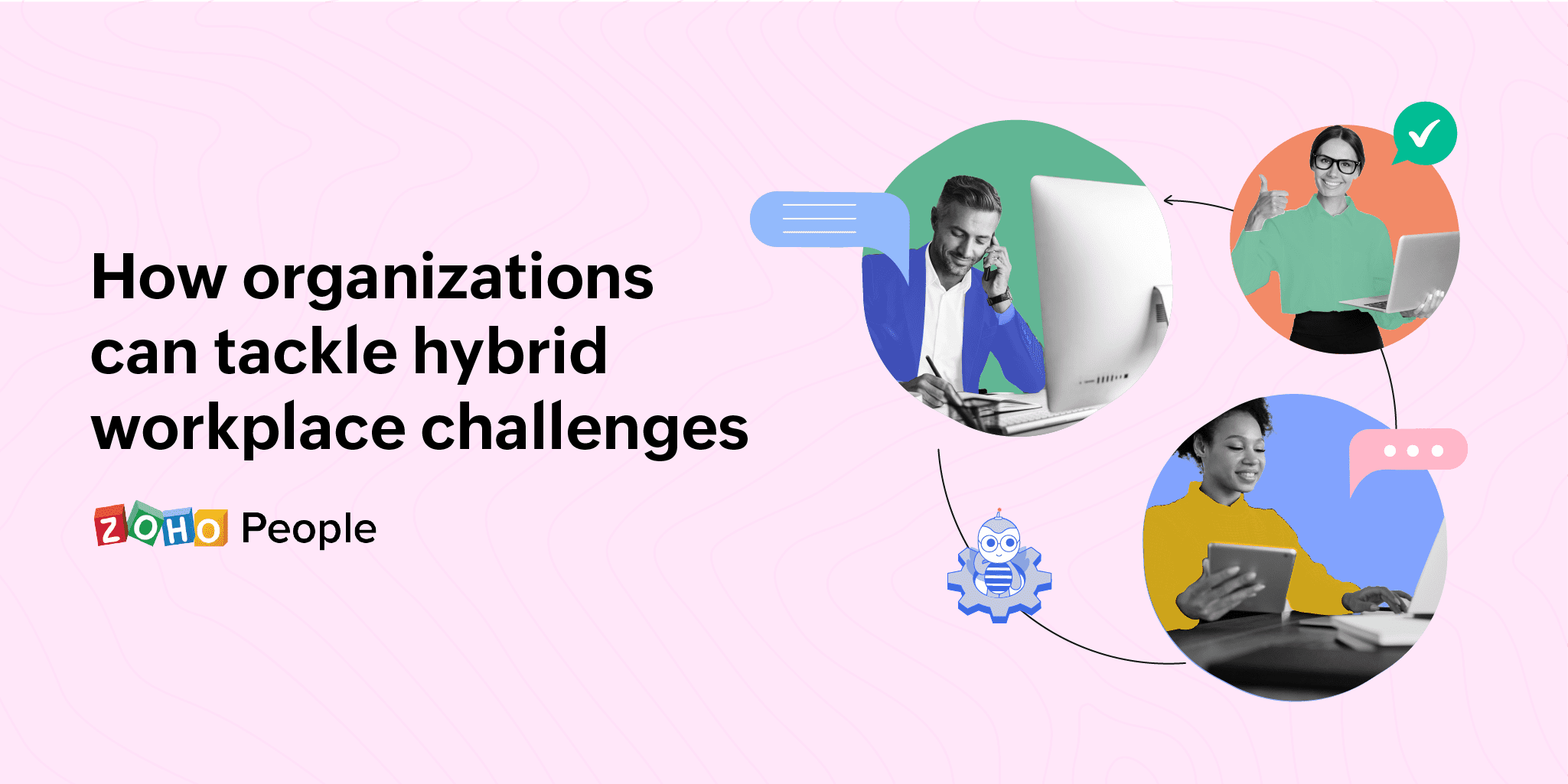- HOME
- HR insights
- Challenges with the hybrid workforce model
Challenges with the hybrid workforce model
- Last Updated : August 23, 2023
- 3.1K Views
- 4 Min Read

With the lessons learned from the pandemic, more organizations are starting to evolve their HR practices so that they are in line with the future of work. Because many have realized that employees can be productive no matter where they work, organizations are experimenting with the hybrid workforce model that has risen to popularity during the last year.
There are many variations to the hybrid workplace model. Sometimes, the organization itself asks its employees to work from the office on a certain number of days and work from home on other days. Others leave the choice to their employees completely. Workers can coordinate with their teams and either alternate between remote and in-office work, or continue to work remotely or from the office permanently.
As this particular workplace model has just started to become prominent, it's important to understand its pros and cons to make sure you implement it in a way that is suitable to how your organization operates. In one of our previous blogs, we had listed the many benefits of the hybrid workplace model. In this blog, we are exploring the challenges associated with it along with the strategies to overcome them:
Challenge 1: Communication and collaboration
In a hybrid workplace, communication and collaboration among your workforce can become challenging as some of your employees work from the office and some remotely. You may find it difficult to foster better relationships among your employees, which is the key to improving teamwork and reducing workplace stress. As a result, your employees may end up working in silos, which can leave them disengaged over time.
Solution: To overcome these communication issues, organize in-person meetings at least once a month or once every two months, and encourage all of your employees to participate. These regular in-person meetings provide an excellent opportunity to make sure managers and employees are on the same page. Managers can use these meetings to review the previous month's performance, discuss upcoming projects, and set goals for the upcoming period. Similarly, establish different communication channels like internal chat systems, a company intranet, email threads, and more to make sure employees can communicate seamlessly, no matter where they work from. This helps ensure transparency remains a core part of every process and function.
Challenge 2: Proximity bias
This is one of the biggest challenges that can greatly damage the success of your organization when left unchecked. If some of your managers and their team members are working from the same location and get a chance to interact in person regularly, managers may tend to support those who they are seeing in person more often and provide better opportunities to them unintentionally. Over some time, as employees who work from home realize the opportunities they are missing, the trust they have in your organization will come down.
Solution: The first step is to make your leaders and managers aware of implicit bias and how it can hurt the trust your workforce has in their company. While assigning tasks and projects, managers can use previous accomplishments and skillset as a base to decide which employee works on what. Similarly, they should assess employees based on the quality of the work they do and not based on how many hours an employee stays at their worksite. If you're unsure whether proximity bias is impacting your organization, run a survey among your employees to understand if they feel a sense of partiality or biased judgments in your people management practices.
Challenge 3: Maintaining organizational culture
Because remote employees often work at a time and from a place that is most convenient to them, embedding culture into your hybrid workplace can get challenging without the right set of adjustments and strategies. Without a proper connection with their workplace, they may lose track of what their work stands for and what they are working towards. Similarly, new hires may find it difficult to adapt to your organizational culture as they may not be able to fully understand how your workplace practices align with your organization's values and mission.
Solution: Reinforce your company culture by integrating your core values tightly with your everyday HR practices. For instance, if being an employee-first organization is one of your core values, showcase that by providing an exceptional working experience to your employees. Communicate your values regularly, and encourage managers to reiterate how each of the projects they take up contribute to the bigger cause. Establish a top-notch communication channel that puts transparency above anything else, and enable each of your new hires to take up workplace culture training that details everything your organization stands for.
Challenge 4: Performance management
Tracking and evaluating employee performance, especially when employees are not under the same roof as their managers, can seem a bit difficult. Sometimes, managers may forget to appreciate good work or provide comprehensive feedback due to the lack of frequent face-to-face interactions. Over time, this may affect your employees' productivity greatly as they may lose their sense of direction.
Solution: Encourage managers to conduct performance reviews at least once every three months. This will help managers be on the same page as their team members. It's also good to implement an intuitive performance management system that enables managers to establish goals, keep track of how employees progress toward their goals, facilitate 360-degree feedback, manage salary hikes, and more. This will provide a system where even remote employees can stay tuned in to their career progression at you organization and provide feedback to their managers regularly as well.
Wrapping up
Because it's still a new concept, the hybrid workplace model can bring mixed results without proper research and implementation. By analyzing the challenges associated with the hybrid workplace model and devising suitable strategies to overcome them, you can make hybrid working fun and engaging for your employees while still maintaining productivity for your organization. We hope this blog gave a fair idea of the major challenges that come with the hybrid workplace model.
 Tarika
TarikaContent Specialist at Zoho People


